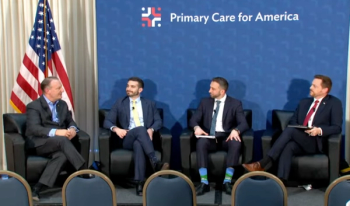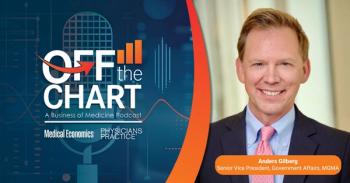
HHS-OIG: We’ve got ‘major concerns’ about massive increases in Medicare spending for skin substitutes
Key Takeaways
- Medicare spending on skin substitutes has surged, raising concerns about fraud, waste, and abuse in billing practices.
- Discrepancies exist between Medicare Part B and Medicare Advantage spending, with the latter using stricter reimbursement controls.
Feds highlight huge growth in spending on wound care and why it could be problematic in health care.
Skin substitutes are a crucial part of wound care for some patients — and also have become a factor in health care fraud cases involving millions of dollars.
Skin substitutes and
HHS-OIG put the U.S. health care system on notice that federal regulators have their eyes on Medicare billing for a treatment that has had huge growth in the last few years. The title of the review was blunt: “Medicare Part B Payment Trends for Skin Substitutes Raise Major Concerns about Fraud, Waste and Abuse.”
David Tawes, MA, regional inspector general with the HHS-OIG Office of Evaluation and Inspections, also discussed the report with Medical Economics.
Use and spending on the rise
Traditional Medicare spent $389 million for skin substitutes in the third quarter of 2022. Two years later, that increased to $2.88 billion for the third quarter of 2024, with last year’s total expenditures topping $10 billion.
In that upward trend, HHS-OIG identified several aspects that raised concerns:
- There were large increases in the number of beneficiaries with skin substitute claims and in the amount of product billed per enrollee, particularly in home care.
- Medicare Part B and Medicare Advantage had “a massive gap in spending.”
- Individual skin substitute costs were rising as providers shifted to more and more expensive products.
- Some fraud schemes came to light in which defendants were accused of billing tens of millions of dollars for just a small number of Medicare Part B beneficiaries.
We can't say exactly what percentage of the payment increases are due to fraud, but it definitely appears to be a significant issue, given the high payment amounts, in many cases much higher than their cost,” Tawes said. The 2025 spending is estimated to approach $15 billion, he added.
Keeping the ‘spread’
The HHS-OIG report listed at least two factors that could influence those trends.
- Manufacturers could bring new skin substitutes relatively quickly.
- There were financial incentives to make certain products more attractive to health care providers.
“Under the current payment system, Medicare often pays providers for skin substitutes at amounts much higher than the providers’ purchase prices, and providers keep the ‘spread,’” the report said. “This creates incentives to bill for more and more units of skin substitutes and to choose products with the greatest spreads — the same types of billing trends highlighted in this report.”
Calculating payment
Medicare reimbursed skin substitutes at 106% of the average sales price (ASP), based on a manufacturer’s total sales of a drug or product to all purchasers in the United States in a calendar quarter and the number of units sold.
But the skin substitute ASP was sketchy for months. In March 2023, another HHS-OIG report called out “significant gaps” in skin substitute manufacturer compliance with ASP reporting requirements.
Meanwhile, skin substitute use increased. From the first quarter of 2023 to the third quarter of 2024, the number of unique Medicare Part B enrollees with skin substitute claims rose by 53%. The total number of units paid climbed by 83%, with the average skin substitute payment ballooning by 153%. From the start of 2023 to the third quarter of 2024, the amount paid per Medicare Part B enrollee grew from $40,051 to $121,501, according to the HHS-OIG figures.
Medicare Advantage differences
HHS-OIG also spotted a distinction involving skin substitute claims.
“Medicare Advantage now covers about, more than half of Medicare enrollees, so you would expect maybe spending or utilization to be the same or close to the same between Medicare Advantage and conditional Medicare,” Tawes said.
Medicare Advantage (MA) enrollment has grown in recent years, and this year covers almost 35 million people, or approximately 50% of total Medicare enrollees. But in the third quarter of 2024, MA had far fewer enrollees associated with skin substitute claims than traditional Medicare — 3,800 vs. 24,000. The MA claims typically had fewer units per patient — 69 vs. 82 — and less expensive products — $730 vs. $1,470. For that quarter, MA spending on skin substitutes totaled $192 million, while traditional Medicare paid for claims totaling $2.9 billion, according to the HHS-OIG figures.
“It's more than six times more people than traditional Medicare received a skin substitute compared to MA,” Tawes said. “And then spending in MA was less too, so the average per patient was less, the number of units the cost of what was billed, so MA spending was just 7% of Part B spending.
“This is likely because MA can use reimbursement coverage tools like prior authorization that at the moment aren't really available in traditional Medicare,” he said. “There's just something specifically about skin substitutes, and I think it has to do with, if a lot of these are fraudulent, prior authorization in Medicare Advantage would catch them. So, if you've got an item that is particularly vulnerable to fraud, some of the aspects of MA will keep payments from being made compared to Part B, where those kind of tools are more limited.”
Cashing in — and getting caught
The large amounts of money moving out caught the eyes of federal regulators who have filed criminal charges over skin substitute billing.
Last year, the
Gehrke and King
The Scottsdale Progress reported Gehrke is scheduled to be sentenced on Oct. 7 and could face 20 years in prison, while King is scheduled for a sentencing hearing on Oct. 10.
“They weren't even medical professionals. She had run an art studio and worked in real estate. He was a DJ and a producer,” Tawes said. “They started to work a wound care company, hired a bunch of marketers supposedly from the solar panel industry, and they scoured nursing homes, hospices and other settings to find patients with wounds. And then they offered to pay health care professionals, usually nurse practitioners, a flat fee to apply and bill for the maximum amount of product.”
The couple were arrested at the Phoenix airport, ready to leave the country for what they claimed was a honeymoon, Tawes said.
“That is a lot of money and obviously that's a huge case,” he said. “There are other many smaller cases out there, but I mean, it was a billion dollars, again, in just 12 to 18 months, so that shows you how much money is to be made on this by unscrupulous actors.”
Call to action
The HHS-OIG report included a call to action and questions for policymakers to consider for future reimbursement for skin substitutes.
“We want enrollees who need the treatment to get the treatment,” Tawes said. “But we also want to remove incentives that drive inappropriate and even fraudulent billing.”
The U.S. Centers for Medicare & Medicaid Services (CMS) also has proposed changing the skin substitute payment methodology in its 2026 Medicare Physician Fee Schedule. If enacted, CMS projected next year it would cut $9.4 billion from Medicare Part B spending for skin substitutes.
CMS also has announced plans for a new six-year payment model to run in six states starting 2026. That new model raised eyebrows in health care for proposing to use artificial intelligence to streamline prior authorization for some high-cost services in traditional Medicare, which generally has far less PA burden than Medicare Advantage. But that model will require review prior to paying for some skin substitutes, according to CMS.
Fighting fraud
The administration of President Donald J. Trump generally has emphasized the goal of reducing waste, fraud and abuse in government spending across the board.
In Medicare billing, claims must be paid on time. Then as claims data accumulates, the regulators can begin examining for anomalies, Tawes said, describing the process as timely and time-consuming. HHS-OIG staff have gotten much better at accessing data in real time, he said.
“But still, there's always going to be a lag in between when something pops up and when the enforcement can catch up to hopefully try and fix it,” Tawes said.
A message for primary care
Physicians already may have seen that skin substitutes have been heavily marketed even outside the wound-care community, Tawes said. He cited the example of medical professionals posting on Reddit and other online forums about being approached with the promise of making a lot of money by applying skin substitutes.
“Be wary,” Tawes said. “If you hear something that sounds sketchy or too good to be true, it’s probably not on the up and up.”
The HHS Office of Inspector General’s complaint line is 1-800-HHS-TIPS, and
Newsletter
Stay informed and empowered with Medical Economics enewsletter, delivering expert insights, financial strategies, practice management tips and technology trends — tailored for today’s physicians.


















